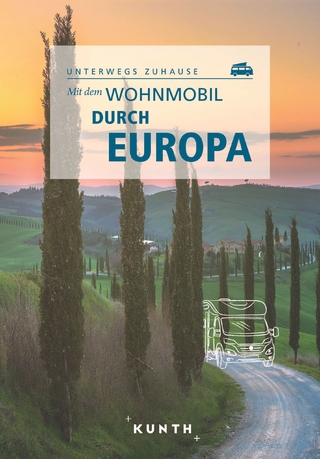
Wonderful Trentino
Seiten
2020
|
3. Auflage
Curcu Genovese (Verlag)
978-88-6876-200-1 (ISBN)
Curcu Genovese (Verlag)
978-88-6876-200-1 (ISBN)
The eagle and the butterfly. On 9 August 1339 King John of Bohemia conferred on the Bishop of Trent, Nikolaus Abrein (1338-1347) of Brno in Bohemia the use the flaming eagle of St. Wenceslaus for the coat of arms of his government and the Prince-Bishopric of Trent. The Autonomous Province of Trento also adopted the coat of arms of the former Prince-Bishopric, which featured of a black eagle on an argent field, with gold beak, talons and braiding, surrounded by 420 small red flames. Trentino is shaped like the two wings of a butterfly or a vine leaf, with the middle stretch of the River Adige (410 km in length from the source at the Reschen Pass that joins the Adriatic Sea near Chioggia) flowing through it from north to south.
The steep side valleys have been deeply cut through by the Sarca, Chiese and Noce fast-flowing mountain streams in the western part of the province and the Avisio, Brenta, Fersina, Leno and Cismon rivers in the eastern part. The waters of hundreds of seasonal streams and rivulets flow into each of these torrential rivers. Trentino covers a total area of 6,212 square kilometres, making up just over 2% of Italian territory. 70% of the Province is covered in woods, meadows, rivers and lakes while 60% of the area lies at an altitude above 1,000 metres.
Tourism, along with agriculture, is the main resource of the province, which has a population of 540,000 inhabitants. A number of different linguistic groups live within the Autonomous Province of Trento. Though the majority of the population is Italian speaking, there are three linguistic minorities: Ladini (Val di Fassa, 8,092 in 2011 census), Mocheni (Fersina Valley, 1,660) and Cimbri (Luserna, Folgaria and Lavarone, 1,072).
Fabio Monauni
The steep side valleys have been deeply cut through by the Sarca, Chiese and Noce fast-flowing mountain streams in the western part of the province and the Avisio, Brenta, Fersina, Leno and Cismon rivers in the eastern part. The waters of hundreds of seasonal streams and rivulets flow into each of these torrential rivers. Trentino covers a total area of 6,212 square kilometres, making up just over 2% of Italian territory. 70% of the Province is covered in woods, meadows, rivers and lakes while 60% of the area lies at an altitude above 1,000 metres.
Tourism, along with agriculture, is the main resource of the province, which has a population of 540,000 inhabitants. A number of different linguistic groups live within the Autonomous Province of Trento. Though the majority of the population is Italian speaking, there are three linguistic minorities: Ladini (Val di Fassa, 8,092 in 2011 census), Mocheni (Fersina Valley, 1,660) and Cimbri (Luserna, Folgaria and Lavarone, 1,072).
Fabio Monauni
| Erscheinungsdatum | 01.08.2020 |
|---|---|
| Verlagsort | Bozen |
| Sprache | englisch |
| Maße | 210 x 210 mm |
| Gewicht | 898 g |
| Themenwelt | Reisen ► Bildbände ► Europa |
| Schlagworte | Culture • Dolomites • Mountains • Nature |
| ISBN-10 | 88-6876-200-5 / 8868762005 |
| ISBN-13 | 978-88-6876-200-1 / 9788868762001 |
| Zustand | Neuware |
| Haben Sie eine Frage zum Produkt? |
Mehr entdecken
aus dem Bereich
aus dem Bereich
Inspiration für ein ganzes Leben
Buch | Hardcover (2023)
DuMont Reiseverlag
39,90 €
das große Reisebuch
Buch | Softcover (2023)
Kunth Verlag
29,95 €


